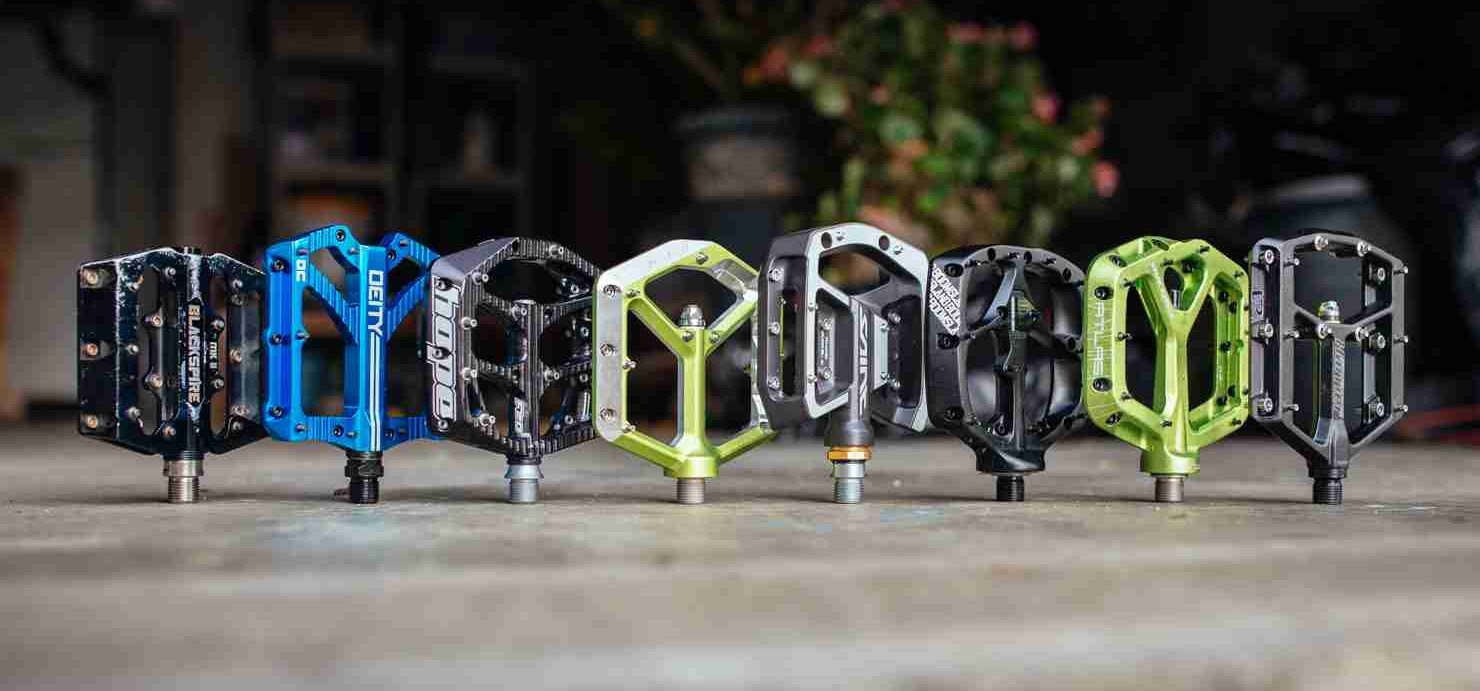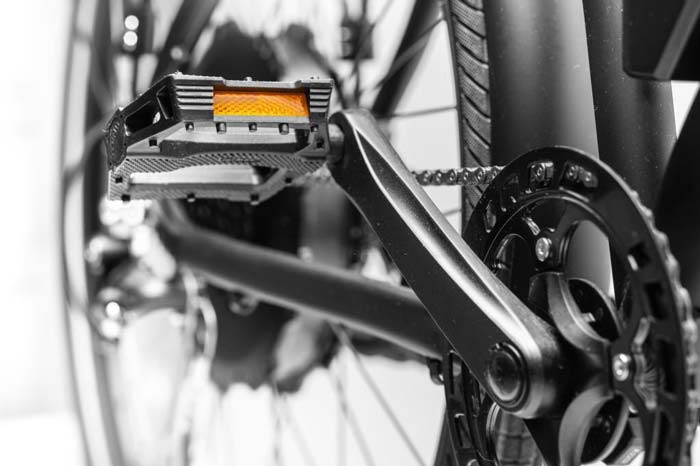Regular flat pedals may be uncomfortable for some cyclists. Fortunately, today’s market has many different pedal types that you can adapt to your touring bike. Some models reduce the stress generated on the feet when pedaling backwards. Others protect your road cycling shoes from scratches.
If your regular flat pedals are ruining your feet, now is the time to change them for something better. We’ll now introduce you to the most common pedals for touring bikes and the advantages and disadvantages of each.
Different Types of Touring Bike Pedals
Tired of your old bicycle pedals? If that’s your case, pay close attention. Perhaps one of these different options may interest you.
Pedals with Cleats
Pedals with cleats provide extra grip and freedom of movement. Your feet won’t be separated from the pedals while pedaling, which is very useful during rain or snowfall. In this system, cleats previously installed in your shoes are inserted by pressure in a retaining mechanism on the pedals.
To free your feet, you just need to lift them quickly. The best thing about these pedals is that they don’t restrict the movement of your feet like straps and cages do. In addition, they’re durable and very cheap. However, the design of the pedals may scratch your shoes.
Non slip Flat Pedals
They’re basically flat pedals covered with sandpaper. Obviously, the sandpaper used in these cases isn’t what you would find in a hardware store. This sandpaper is much more resistant to water and friction.
The rough surface on the pedals provides higher grip, even on wet conditions. In addition, they’re very comfortable and allow you to separate your feet from the pedals to rest for a while. These pedals have a larger contact surface, so they’re bigger than the rest.
Many people think that they’re ugly because of their large size. However, if you’re looking for an option that doesn’t ruin your shoes, this is certainly the best one for you.
Ordinary Flat Pedals
This is the type of pedal you’ll find on any common bike. It’s basically a flat piece of metal or plastic with patterns on its surface. They’re the cheapest and most commonly used in the world. So, if you break your bike pedals on your next vacation, you’ll surely find a couple of these anywhere.
If you want something that lasts forever, choose a metal pedal. In the market you’ll find many different models and brands. Make sure to choose a well known brand and stay away from the cheapest model.
Straps & Cages
Straps and cages use strips and structures of a flexible and resistant material to hold your feet on the pedals. They’re very practical but restrict the natural movement of your feet while pedaling. This can generate excessive stress on some muscles, causing great pain after physical activity.
When using these kinds of pedals, it isn’t advisable to overtighten the adjustment pedal straps so as not to affect the blood circulation of your feet. Straps and cages are very cheap; however, they may scratch your shoes.
Clipless Pedals
They follow the same principle of pedals with cleats. Clipless pedals also have a flat side, so they’re ideal for all kinds of shoes. On the opposite side, they have a retaining mechanism that fits the cleats on the shoes.
To use clipless pedals, it’s necessary to wear special shoes. Some models are even sold along with the shoes. Usually, they’re the most expensive pedals and the favorites of professional cyclists.
With clipless pedals, you only focus on pedaling upward, helping save some extra energy.
Tips for Choosing the Right Touring Bike Pedals
Now that you know the most popular bike pedals in the market, it’s time to know when to choose a particular model and why.
Before making any decision, consider the weather conditions of the place. If it’s likely that you face rain or snow during your trip, you need to keep your feet stuck on the pedals all the time. So, common flat pedals may not be an option.
If the shoes you wear are an important part of your uniform and you use your bike every day to go to work, choose pedals that won’t ruin your shoes. In these cases, anti-slip flat pedals are the best option.
If you suffer from muscle and tendon pain or you may be recovering from tendonitis, your feet need to move freely while pedaling. For these cases, it isn’t advisable to use straps and cages.
Certainly, you can always find touring bike pedals in the market that make you feel safe and comfortable. So, if you aren’t satisfied with your current pedals, you should try any of these options. Undoubtedly, new pedals will help you get the most out of your bike and take your touring experience to the next level.
FAQ
1. Do Clipless Pedals Help Climbing?
Yes. Clipless pedals help you generate more traction on the wheels while you’re riding uphill.
2. Are Clipless Pedals Really More Efficient?
Yes. Clipless pedals increase your cycling efficiency by up to 15% and they enrich your bikepacking setup to a great extent. They focus your energy on upward pedaling; helping you save the energy you used to spend on backward strokes.
3. Are Clipless Pedals Dangerous?
No. In fact, clipless pedals are among the safest bike pedals. They keep your feet attached to the pedals even in extreme weather conditions.
4. Do you need special shoes for Clipless Pedals?
Yes. Clipless pedals require special shoes with threaded insert plates to install the cleats. However, you can also use the flat side of clipless pedals with any kind of shoe.









